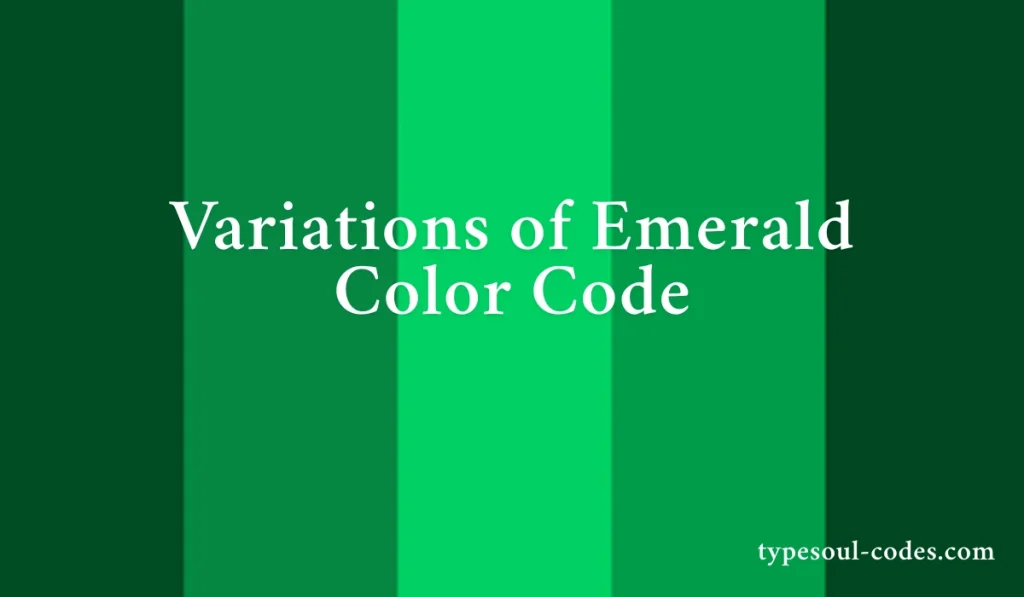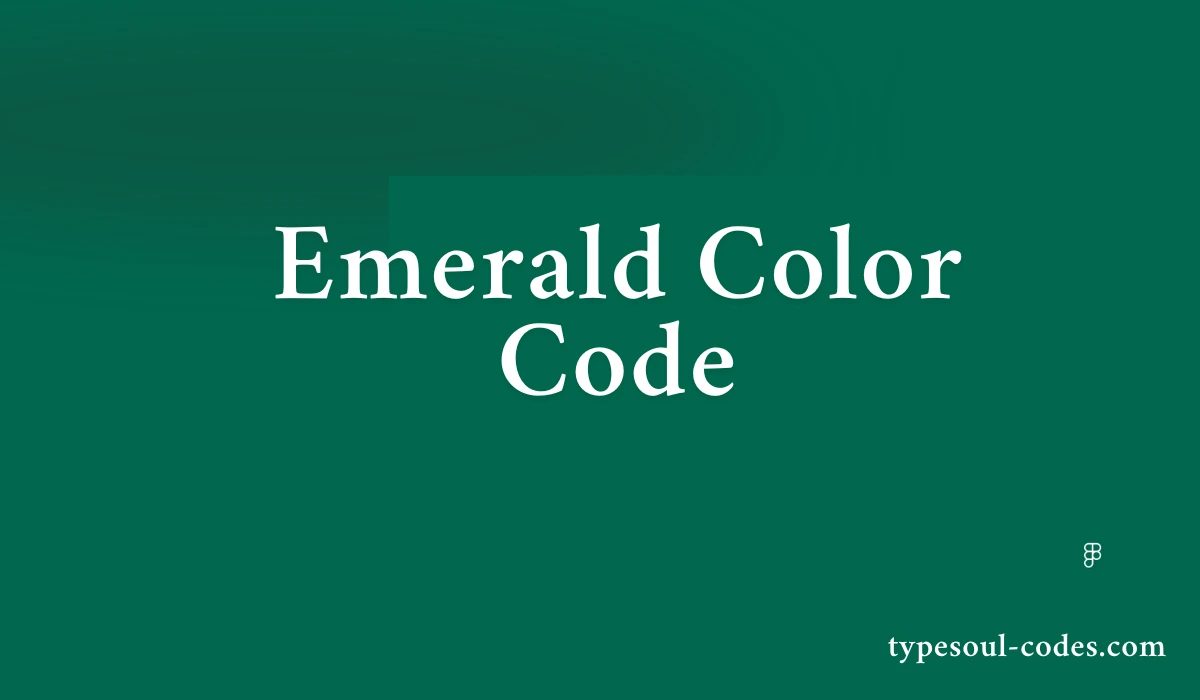The Emerald Color Code plays a vital role in modern design. This lush and luxurious green tone brings elegance, nature, and style into digital and print projects. In 2025, it’s more than just a color—it’s a statement. Designers around the world use emerald green for branding, interiors, websites, and UI design. To help you understand and apply this tone effectively, this article breaks down the emerald color code, its variations, uses, and visual impact.
What Is the Emerald Color Code?
The emerald color code is a specific combination of color values that define the shade of emerald green on digital platforms. It allows consistency in visual content across screens and mediums. Emerald is a rich, medium-to-deep green with subtle blue undertones.
The most commonly accepted emerald color code is #50C878. This hexadecimal code is used in web design and digital applications to reproduce the exact shade.
Digital Values for Emerald Green
| Color Format | Code Value |
|---|---|
| HEX | #50C878 |
| RGB | rgb(80, 200, 120) |
| HSL | hsl(140, 52%, 55%) |
| CMYK | 60, 0, 40, 22 |
These values ensure that your design will always have the same shade of emerald green on websites, apps, and print media.
Why the Emerald Color Code Matters
The emerald color code offers much more than just visual appeal. This shade of green carries deep meanings and psychological effects. It symbolizes wealth, harmony, growth, and nature. Because of its connection to the emerald gemstone, the color also expresses sophistication and prestige.
Designers prefer emerald because it strikes a balance between professional and inviting. Whether you’re designing for a tech product or a luxury brand, the emerald color code adds a refined finish that stands out.
Understanding RGB and HEX in Emerald
The RGB model shows how much red, green, and blue light makes up the color. For emerald, it contains 80 red, 200 green, and 120 blue. The green is dominant, giving the color its vibrant, natural look.
In contrast, the HEX code uses a base-16 system. #50C878 breaks down like this:
50in hex = 80 redC8in hex = 200 green78in hex = 120 blue
These values match the RGB system, making them interchangeable depending on your design software.
| Feature | Value |
|---|---|
| HEX Code | #50C878 |
| RGB | 80, 200, 120 |
| HSL | 140°, 52%, 55% |
| CMYK | 60%, 0%, 40%, 22% |
| Type | Jewel-tone green |
| Best Used In | UI design, branding, décor |
| Meaning | Growth, wealth, elegance |
| Similar Colors | Jade, teal, forest green |
Read more: Light red color code
Using Emerald in Modern Design
Designers use emerald green in both UI/UX and print to evoke trust and elegance. It works well as a primary or secondary brand color. Its deep tone makes it suitable for backgrounds, headers, buttons, and banners.
In interior design, emerald brings freshness and energy into a room. From throw pillows to accent walls, its jewel-like richness makes a bold yet calming impression.
Fashion designers also embrace the emerald color code for creating standout outfits. The color flatters many skin tones and pairs well with gold, ivory, or black.
Variations of Emerald Color Code

Emerald green has several shades that fall under the same family but vary slightly in brightness and hue. Here’s a table of commonly used emerald variations in 2025:
| Shade Name | HEX Code | Description |
|---|---|---|
| Emerald | #50C878 | Standard digital emerald |
| Deep Emerald | #00674F | Richer with deeper blue tone |
| Mint Emerald | #73D393 | Soft, fresh, and light |
| Aqua Emerald | #3EBB9E | Blue-green hybrid |
| Bright Emerald | #8AC850 | Vibrant and lime-tinged |
These variants can be used together in gradients or theme-based designs.
Best Color Combinations with Emerald
The emerald color code matches well with both cool and warm shades. Here are top combinations:
- Ivory or Off-White: Clean, elegant, and minimal.
- Gold or Brass: Rich and luxurious tone pairing.
- Blush Pink: Soft contrast for feminine design.
- Navy Blue: Balanced and professional aesthetic.
- Peach or Coral: Fresh and trendy in 2025.
- Charcoal Gray: Urban and sleek tone.
Avoid pairing emerald with neon tones or high-saturation reds. They can overpower its natural beauty and create visual conflict.
Accessibility and Emerald Green
Color contrast matters in design, especially when it comes to readability. The emerald color code works best on light or neutral backgrounds. When using emerald as a background, pair it with light gray or white text for clear readability.
Design tools like Figma, Adobe XD, and Canva now include accessibility plugins that analyze your emerald color code usage to ensure it meets WCAG (Web Content Accessibility Guidelines).
The Cultural Significance of Emerald
Emerald green is not just a color—it carries history and culture. The shade gets its name from the emerald gemstone, long valued in royal jewelry and mystical symbolism.
In Irish culture, the country is known as the Emerald Isle, a term referring to its lush, green landscapes. The emerald color code has thus become symbolic of Ireland, renewal, and prosperity.
Historically, emerald paint became popular in the 19th century but was originally made using toxic arsenic compounds. Today, the color is completely safe and widely used in fashion, design, and branding.
Read more: Is code switching bad
Why Designers Love the Emerald Color Code in 2025
In 2025, the demand for natural, soothing, yet bold colors has grown. The emerald color code is perfect for:
- Eco-friendly brands
- Luxury beauty and fashion
- Interior home brands
- Modern digital interfaces
Its richness attracts the eye, while its association with balance and nature calms the viewer. For these reasons, it continues to rank high among designers worldwide.
Frequently Asked Questions
What is the emerald color code?
The emerald color code is #50C878, widely used in digital and print design.
Is emerald green a warm or cool color?
Emerald is a cool color due to its blue undertones, but it feels emotionally warm.
What are the RGB values of the emerald color code?
The RGB values are 80 (red), 200 (green), and 120 (blue).
Can emerald green be used in UI design?
Yes, the emerald color code works well in UI design, especially for buttons and highlights.
Conclusion
The emerald color code is more than just a shade—it’s a tool that helps tell stories of luxury, peace, and power. From web design to fashion to home décor, emerald green shines in 2025. Understanding its digital values and symbolic meaning gives you the edge in using this color effectively in any creative project.

